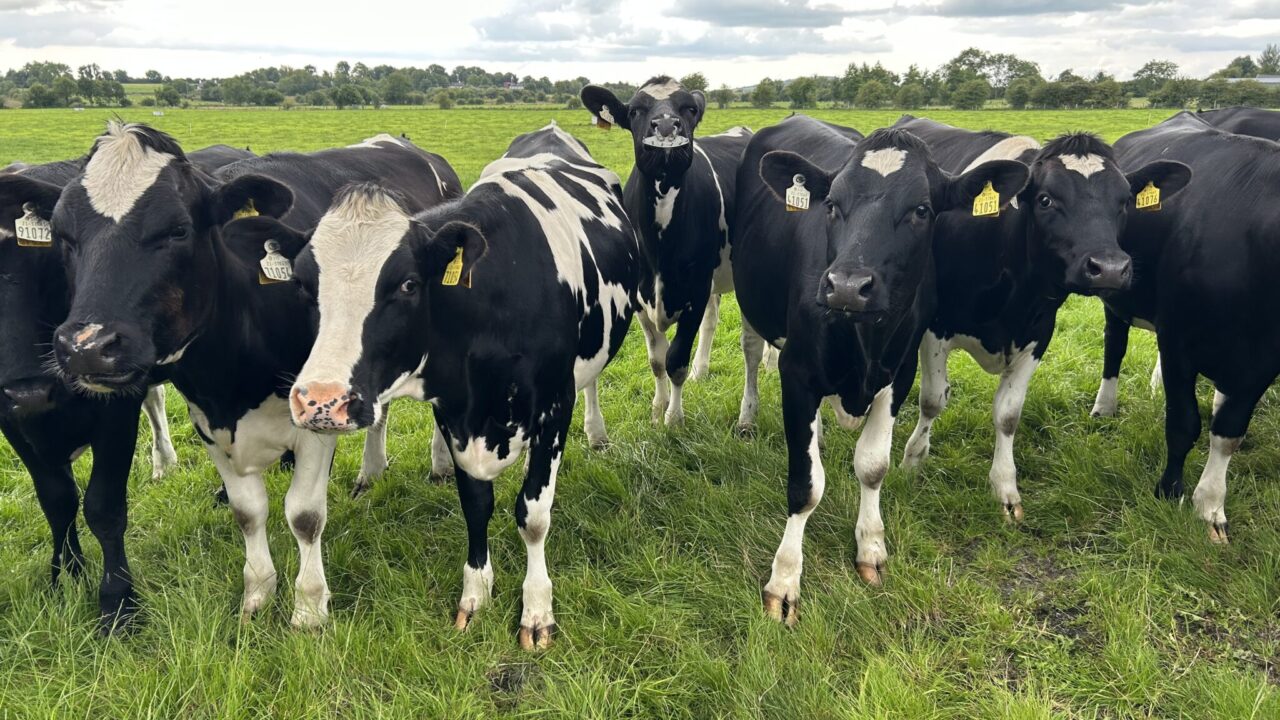Weighing and acting on underweight heifers and heifer calves should be on the agenda, especially as the weather turns a bit harsher.
Lower survival rates to third lactation and reduced milk yields in subsequent lactations, are just some of the consequences of failing to achieve the target weight for age when rearing replacement heifers.
Identifying any underweight heifers and ensuring they are the correct weight by mating start date has to be one of the main objectives on any dairy farm to ensure health, performance, and lifetime production from these heifers.
A dairy farm cannot be successful without a productive, healthy next generation of milkers.
Weighing and acting on poor condition heifers will ultimately lead to heifers calving down at the optimal age of 22-24 months, and in turn will help to maximise farm profitability.
The maintenance sub-index is the main tool to determine the cow’s future mature weight – the higher the maintenance sub-index, the lighter the cow.
If the maintenance sub-index is unavailable for your herd or is only a reflection of fraction of your herd, farmers should aim to weigh about 8-10% of mature cows in the herd for further accuracy.
February-born weanling and yearling heifers should be 35% and 75% respectively of their pre-calving body weight on September 1, if they are to be successfully calved at two-years-of-age.
The target bodyweight guidelines for replacement heifers is as follows:
| Age | Percentage of mature cow body weight |
|---|---|
| Six months | 30% |
| 15 months (breeding) | 60% |
| 24 months (first calving) | 90% |
In Ireland, on average, only 75% of heifers calve down at 22-26 months-of-age, which has a significant consequence on the calving pattern and your production, which will have a massive impact on your overall costs.
Acting on underweight replacement heifers
Weighing is the best way of identifying underweight heifers to ensure that all heifers are on course to achieve their desired weight before the start of breeding.
If there are a few heifers that are underweight, supplementation should be added to their diet immediately, as it will be too late to try and correct underweight heifers next April or May.
Heifers should be still out at grass and fresh lush covers should be kept in front of them. The strip wire may have to be reintroduced for the remainder of the year to ensure good clean-out and proper allocations.
When these heifers are housed, they should be receiving top quality silage of a dry matter digestibility (DMD) of 75% over the winter period in order to improve their performance and live weight.
If no quality silage is available, these heifers may need additional meal.
Replacement heifers can take a turn and lose condition in a matter of days, so it is important to make sure they have enough feed space when supplemented with meal at grass, and also at housing during the winter.
Heifers that are lighter and behind target should be grouped together, away from the high performing heifers, so that the lighter heifers can be prioritised with a better flush of grass, better silage, and extra supplementation.
Your replacement heifers should be eating at least 2.2% of their target bodyweight by now, which equates to roughly 4kg DM/day for a Friesian-type calf.
In the springtime, getting your heifers out early is key, as higher weight gains come from pasture. If the heifers are not uniform, you should prioritise letting the lighter heifers out first.
Worms and fluke
In these damp and warm conditions, stomach and lungworms can pose a threat, in particularly on younger calves in their first year of grazing.
Worm egg count can indicate whether the calves need treatment, and the worm burden can be monitored. Counts above 200 eggs/g along with poor live weight gains are sure signs of clinical disease.
Farmers should consult a vet regarding the level of infection that requires their calves to be dosed, as a certain level of infection should be excepted.
Coccidia in young calves is also something to be mindful of, as it can be an issue for calves early in the grazing season.
Getting the dung sampled is an effective way of distinguishing what is affecting your calves and will help with treating them in a precise and effective manner.
Calves should not be dosed based on a schedule but rather treated when required while bearing in mind that grazing management is the most effective way of reducing the spread and impact of worms on your farm.
Mapping out low, medium, or high-risk paddocks for worm egg contamination might be a way to control the spread and plan your grazing.
Fly control at this time of the year and in these conditions needs to be controlled as well, as it can lead to summer mastitis in in-calf heifers or issues with their eyes.
The aim is to have all your heifers uniform and on target, and if they are not, now is the time to act and rectify the situation to ensure a healthy heifer getting bulled next May.
For your heifers that already bulled and hopefully scanned in calf by now, the aim is to have them calving down at 90% of their mature bodyweight to ensure they will be robust, last long in the herd, and live up to their genetic potential.

